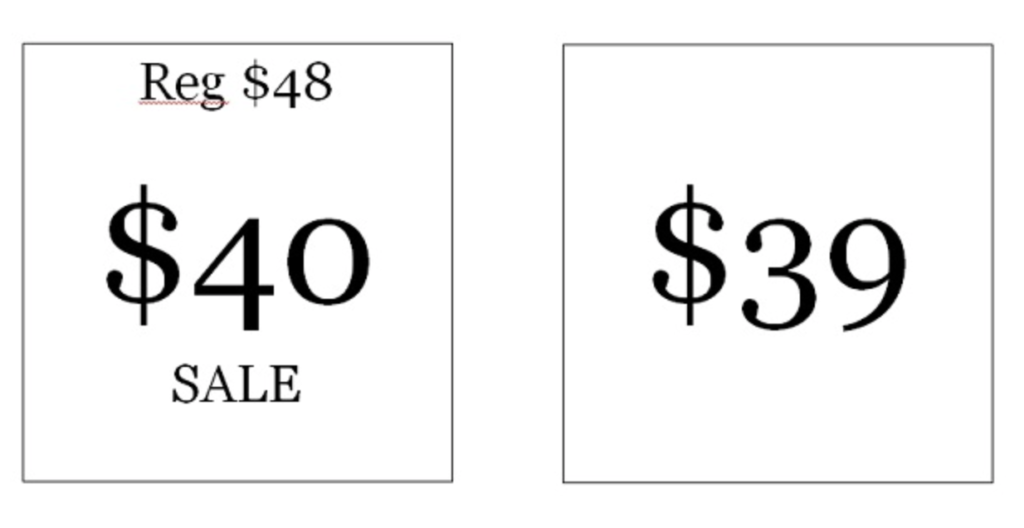5 Psychology Hacks for Pricing Photography Packages
May 5, 2021
I previously talked about things to consider when pricing photography packages, but now I want to tell you some secrets about how organizing your photography packages in a particular way can bring success. Yep, i’m suggesting that the way in which you present your photography packages matters as to whether or not someone books with you. Actually, i’m not suggesting it, psychology is.
Below I’ve analyzed a few recent research studies that dive into pricing of products and services in the hope that you might better understand how to price your own goods.

Comparative Pricing
This first technique is where you compare your photography packages prices to that of a competitor. This new research from a Stanford marketing study has shown that asking consumers to directly compare prices may have unintended effects. They found that presenting pricing in this way can cause potential clients to not buy at all because they perceive hiring you as a greater risk.
“Useless” Price Points
If you choose to offer various packages, you will find that the differences between your pricing points are going to greatly affect your customers perceived value of your product (and how they ultimately convince themselves of whether or not to choose you).
In the video below, Dan Ariely describes the pricing situation encountered over at The Economist. Basically, he realizes there are 3 very peculiar price points:
- A web-only subscription for $59
- A print-only subscription for $125
- A web + print subscription for $125
Daniel shows us that while option to seems “useless.” It’s not. He follows up by referencing a study that shows that the middle option that seems pointless is super helpful in turning “bargain hunters” into “value seekers.”
When customers began to compare the middle option to the latter option (since their prices were similar) and this comparison made option 3 look like an excellent deal. Without the middle option, the price points have too much contrast. When the middle option was taken away, people would convince themselves that they didn’t need the “upgrade”.
The power of 9
Walk into basically ANY retail store and you will see the “power of 9” in action. The theory goes that if something is priced at $99 it looks cheapter than $100. But is that true? As it turns out, it is!
In fact, in an experiment tested by MIT and the University of Chicago, a standard women’s clothing item was tested at the prices of $34, $39, and $44.
To the researchers surprise, the item sold best at $39, even more than the cheaper $34 price.
However, researches have found there is one tactic you can implement that beats “the power of 9.” That tactic is what we will discuss next.
Sale Price
Researchers have found that sale prices, that emphasize the original price, do seem to beat out number 9 when split tested. In the image below, the price point on the left won:

however…
The “power of 9” still wins the day when it is used with “sale price.” In another split test, the sale prices was used ending in ‘9’, and it ended up performing best of all:

Price Perception
The last theory is regarding price perception. In a pricing experiment conducted by Richard Thaler, two scenarios were tested.
First Scenario- the participant was asked by a friend if he wanted a beer. It was specified that the beer was going to be bought by the local rundown grocery store.
Second scenario- Same thing, except the beer would be purchased from a nearby, upscale hotel.
Keep in mind the interior of the hotel had nothing to do with the results. The beer was to be consumed on the beach rendering the environment irrelevant.
Thaler concludes that it simply strikes people as being unfair. They believe they shouldn’t pay the same price for both places, even though the beer itself is exactly the same.
In photography world, if you and someone down the street are selling the same thing but you charge infinitely more, that will make absolutely NO sense to the potential client. So, they ghost you and go with someone else. But there is a way to prevent this.
When it comes to price, priming is also heavily influential. There are two main ways to do this. First, is through your marketing. By knowing what it is that makes you different and marketing the practical benefits of that to your ideal client, you can raise your value in their eyes.
Another way to do this is to have a “premium package” that you never actually intend on selling. A $300 photography package doesn’t sound so bad when it’s placed next to a $500 photography package is the basic principle. Even if you never intend to sell that package, it’s presence can increase conversions on the package you ARE trying to sell.